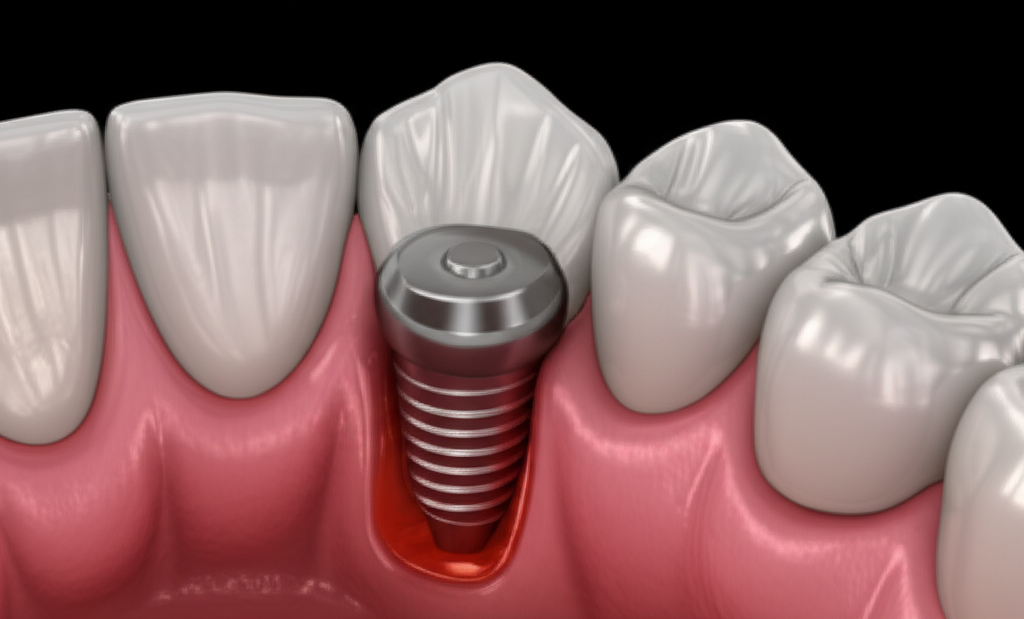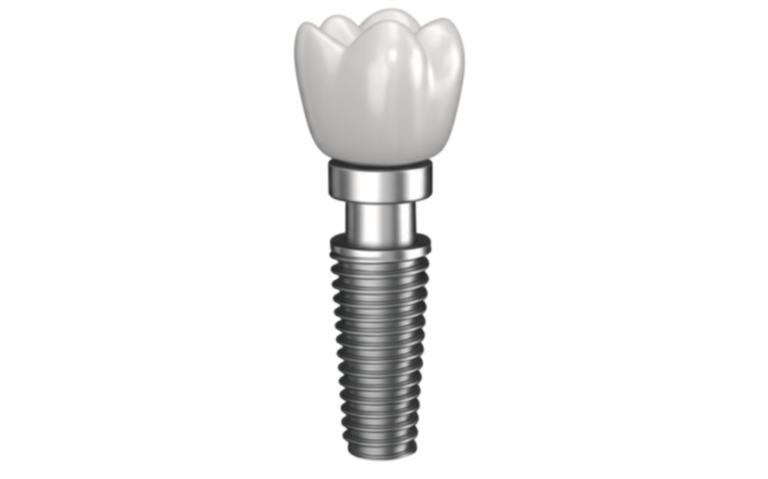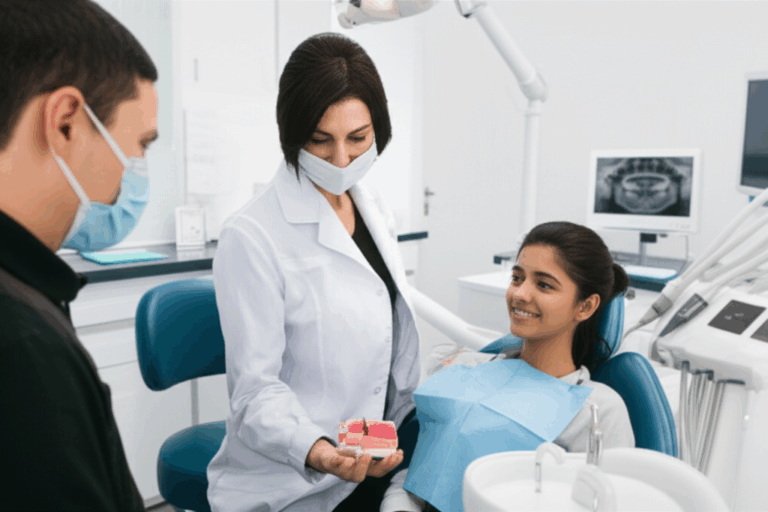
What Happens If a Dental Implant Gets Infected? Symptoms, Risks, and Treatment
Getting a dental implant is a big step towards a healthy, strong smile. But what if that implant starts to hurt or gets infected? This article will show you the warning signs of an infected dental implant, explain why infections happen, and share what you can do to keep your mouth healthy. If you want to protect your smile and your health, keep reading!
Table of Contents
What Is a Dental Implant Infection?
Let me break it down for you: a dental implant is a fake tooth root made from titanium or zirconia. Dentists put it in your jaw bone and, after it heals, put a tooth-shaped crown on top. Implants look and feel real, but just like your own teeth, they can get infected.
When germs get under the gum around your implant and stick on the implant, your body tries to fight back. This can cause something called peri-implantitis. If germs only bother your gums (but not the bone), it’s called peri-implant mucositis. Both are not good, but peri-implantitis is worse.
Some people think implants can’t get infected because they’re not “real” teeth, but that’s not true. Your gums and bone are still alive and need care!
Why Are People Worried About Infected Implants?
Let’s be honest: you put in time, money, and trust to get your dental implant. So, you really want to know what happens if that dental implant goes bad because of infection. Here’s why this is important:
- Pain: Infections can hurt a lot, making it hard to bite or even talk.
- Swelling: Your gums can get big and red.
- Implant Loss: If you don’t take care of it, your implant can fall out.
- Extra Costs: Fixing infections or getting a new implant can cost a lot.
Not only can an infection mess up your mouth, but if it travels, it can lead to bigger problems—like bone infection or even sepsis (rare, but very dangerous). That’s why you can’t just hope it goes away!
What Does Peri-Implantitis Mean?
Here comes a long word: peri-implantitis. It simply means an infection around your implant that attacks the gums and the bone below. At first, the gums get red, puffy, and might bleed.
Peri-implantitis is different from peri-implant mucositis, which only bothers the gum and can be fixed if you act quickly. Peri-implantitis goes deeper and can eat away the bone around your implant. If you don’t fix it, the implant might get loose and even come out.
Think about it like this: peri-implant mucositis is like catching a cold. If you spot it early and take care, you’ll get better quickly. Peri-implantitis is like letting that cold turn into pneumonia—way harder to get over.
What Are the Early Signs of an Infected Dental Implant?
I always tell my patients: don’t ignore what your mouth is saying! Here are some everyday warning signs that mean an infection might be starting:
- Pain or soreness around your implant
- Gum swelling and redness
- Bleeding gums when you brush or floss
- Pus or gunk around the implant
- Bad taste in your mouth or a bad smell
- Pulling back gums—sometimes you can even see the metal of your implant
But sometimes, the infection gets worse and affects your whole body. Watch out for fever, swollen glands in your neck or jaw, and feeling just plain bad.
If your implant hurts when you chew, or feels loose, that’s a big warning. You need to call your dentist!
What Happens If You Ignore the Symptoms?
Here’s the scary part. Dental implant infections don’t just go away. If you don’t do anything, things just keep getting worse:
First, peri-implant mucositis makes your gums bleed or get puffy. If you don’t fix it, the infection goes deeper and turns into peri-implantitis. Your bone starts to disappear, and soon the implant could wiggle or fall out.
The infection can move and hurt other teeth, your jaw, or even spread to your sinuses. In the worst case (but really rare), the germs could get into your blood and make you super sick.
But here’s the good news: if you catch it early, fixing it is easier!
What Causes Dental Implant Infections?
Knowing what causes the problem makes it easier to skip it, right? The biggest reason for dental implant infections is pretty simple: germs like to hide and grow in your mouth.
Here are the main causes:
- Bad brushing and flossing: If you don’t clean your mouth well, germs (called a biofilm) stick to the implant and cause problems.
- Leftover glue: Sometimes, small bits of cement used to glue the crown stay under your gums.
- Chewing too hard: If you bite too hard, your implant or crown might move, letting germs get in.
Some people have a higher chance of getting infections if they have:
- Smoke
- Diabetes that’s not managed
- Weak immune system
- Had gum disease before
- Weak bone
If any of these fit you, you need to be extra careful with your implant!
How Do Dentists Find Out if You Have an Implant Infection?
Dentists are like detectives. They use a few tools to catch infections early:
Here’s a simple table showing what dentists look for:
| Checkup Tool | What It Finds |
|---|---|
| Looking | Gum swelling, pus, redness |
| Measuring | Pocket depth, bleeding |
| X-ray/CT | Bone loss, implant movement |
| Germ check | Germ types causing infection |
Seeing your dentist on time means you can fix problems before they get bigger.
What Treatments Work for Infected Dental Implants?
Every problem has a fix—even an infected dental implant!
If you catch infection early (peri-implant mucositis), here’s what helps:
- Dentist Cleaning: Dentists clean off all the germs and gunk on your implant.
- Mouth rinses and antibiotic gels go right where they’re needed.
- Better cleaning at home: Brush and floss more, and use special brushes for implants.
But if the infection goes to the bone (peri-implantitis), you may need more:
- Surgery: Dentists lift the gum, clean around the implant, and sometimes put in new bone using bone grafts. Sometimes they use lasers or other special tools.
- Removing the implant: Only needed if the infection is really bad and nothing else works.
After treatment, you’ll need regular checkups and to keep your teeth and implants very clean.
If you’re looking to replace your implant or need a high-quality lab for new teeth, check out implant dental laboratory for expert work. They work with dentists around the world to make strong, good-looking teeth.
Can a Failed Dental Implant Be Replaced?
It sounds scary, but losing an implant isn’t the end of the world. If your dentist has to take out the implant, here’s what usually happens:
The main thing: fix the trouble early so you may not need a new one at all!
How Can You Prevent an Implant Infection?
This is my favorite part: staying ahead of the game. Here’s how to keep your dental implant (and your smile) safe:
- Brush and floss every day—don’t let food get stuck around your implant
- Use a special brush (like a small brush for between teeth) to clean next to your implant
- See your dentist twice a year (or more if they say so)
- Stop smoking—it’s a big risk
- Keep health problems (like diabetes) under control
- Pick a dentist who knows implants and works with good labs so your crowns fit right
Teach your kids that their grown-up teeth and dental implants need the same care. If you stick with these habits, your implant can last for years.
When Should You Call the Dentist?
Don’t wait and hope it gets better. Here are big warning signs where you NEED help now:
- You see pus or your gums are very red and puffy
- Your dental implant feels loose or wobbly
- You have a bad taste, pain that won’t quit, or bleeding
- You have a fever or a swollen face
If any of these happen, call your dentist or get emergency dental care. Better safe than sorry.
If you want to know more about common mouth troubles, read our page about dental problems for good tips.
Conclusion: Keep Your Smile Safe!
Dental implants are a great way to get back missing teeth, but you can’t just forget about them. Infections can sneak up if you don’t take care or ignore warning signs. The good news? With daily care, checkups, and help from your dentist, you can avoid trouble.
If you ever have a question about your dental implant, don’t guess—ask your dentist. They can catch problems early and help keep your smile looking good for life.
Summary Table: What You Need to Remember
| What To Watch | Why It Matters | What To Do |
|---|---|---|
| Red, swollen gums | First sign of infection | Brush, floss, call dentist |
| Bleeding or pus | Infection might start hurting bone | Visit dentist quick |
| Pain or loose implant | Implant could fall out | Emergency checkup |
| Fever, swelling, feeling bad | Infection spreading | Get help now |
| Regular cleaning | Stops infections | Brush, floss, use special brush |
| Regular checkups | Stop problems early | Dentist every 6 months |
Most Important Things to Remember
- Brush and floss your dental implants every day—don’t skip!
- Watch out for swelling, bleeding, or bad taste around your implant.
- Visit your dentist every six months for a check and cleaning.
- Stop smoking if you can to keep your implant safe.
- If you have pain or your implant is loose, call your dentist fast.
- A good dental lab, like crown and bridge lab, helps your dentist make new teeth that fit right.
- Don’t ignore signs—the sooner you fix it, the easier it is to solve.
Stay alert, take care of your dental implant, and enjoy your healthy, bright smile for many years!
References:
- Dental implant infection symptoms and treatments from American Academy of Periodontology.
- Case studies and stories from real dentists and patients.
- Professional advice from the International Team for Implantology (ITI) and trusted dental reviews.








